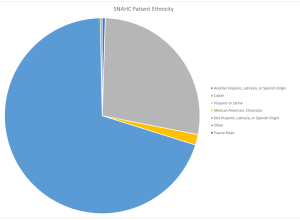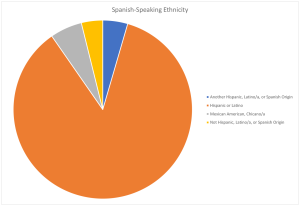Sacramento, California – September 15, 2023— Latinx Heritage Month begins on September 15th. Originally just a week-long celebration declared by President Lyndon B. Johnson in 1968, was later extended to a full month in 1988 by President Ronald Regan. Honduras, Costa Rica, Guatemala, Nicaragua, and El Salvador all share the 15th as their day of Independence. Mexico, Chile, and Belize celebrate their own respective Independence on the 16th, 18th, and 21st of September (Romo, 2021). When President Johnson declared September 15th a National Holiday, he said, “The people of Hispanic descent are the heirs of missionaries, captains, soldiers, and farmers who were motivated by a young spirit of adventure, and a desire to settle freely in a free land” (Romo, 2021, para. 6)
The English word Hispanic originates from the Spanish word Hispano which simply means from Spain (Romo, 2021). The label erases pre-colonial America and glorifies a colonial way of life where people are forced to deny their Indigenous heritage and culture in favor of whiteness. The Encomienda was a Spanish system where land grants were offered to people who signed up to become conquistadores. People came to the Americas knowing they were going to divide and conquer the Indigenous and Native people of these lands. The casta system, a hierarchy of race dependent on Spanish blood, was enacted and used to control Black and Indigenous people, the Spanish centralized government, nationalism, expansion, and Catholic religious institutions. Churches were built on top of ceremonial sites and policies were created against Indigenous languages, religions, and spiritual practices.
Understanding the implications of the Hispanic label is necessary for understanding a Latinx person’s proximity to whiteness. For many Latinx people, my family included, hiding our Indigenous heritage was a means of survival. Spanish history in the Americas, much like that of Anglo protestants, is a bloody one and Latinx history has not always been easily accessible to us in the United States.
Mexico gained its independence from Spain on September 16th, 1810, but the struggles of Mexican, Mexican American, and Latinx people at large, looking to emigrate to the United States began in 1848 after the U.S. and Mexico border was established. In 1924 the Border Patrol was created and in 1930-1938 the Mexican Repatriation movement began. This was where the deportation of Mexicans and Mexican Americans to Mexico were sanctioned. 50,000 to 100,000 U.S. citizens and non-U.S. people were rounded up and deported to central Mexico. Yet in 1942, the Bracero Guest Worker program was enabled which allowed Mexican citizens into the U.S. to work the fields. Yolo County had the largest number of Braceros in California.
In 1942 the Sleepy Lagoon case took place where Mexican American youth and their families laid the groundwork to gain the right to due process. This was a precursor to the Zoot Suit race riots. Just five years later in 1947 the verdict on the Mendez v. Westminster case was decided, overturning a school’s decision to prohibit Mexican enrollment. In 1954 during the Hernandez v. Texas case, Mexican Americans gained the privilege to serve on a jury board. And finally, in the 1960’s the Chicano movement was born. The children of Mexican American families learned how to organize and began politicizing themselves in a distinguished way that had not been done before. They began to reclaim their Indigenous heritage that was severed during the colonization and assimilation processes.
In a Pew Research Study titled “Facts on Latinos in the U.S.” by Moslimani and Noe-Bustamante, there were 62.5 million Latinx people in the United States as of 2021. 68% of that population are U.S.-born and 25% reside in California. In another study from 2020, Afro-Latinx identified people made up 2% of the U.S. adult population and 12% of the Latinx adult population (Gonzalez-Barrera, 2022). Here at SNAHC, we have 623 active Spanish-speaking patients. Below are graphs that break down that population by Ethnicity and Ethnicity within the Spanish–speaking population.


SNAHC is a patient-centered health home hub offering Medical, Dental, Vision, Behavioral Health, and Community Health for all Sacramento community members. With our new location in South Sac and our many Spanish-speaking staff members, we are even more committed to serving the almost 400,000 Latinx-identified people in Sacramento County!
Guia para el paciente / Spanish Patient Handbook PDF
English Patient Handbook PDF
Sacramento Native American Health Center is a non-profit 501(c)(3) Federally Qualified Health Center committed to continue and share the legacy of a healthy American Indian / Alaska Native community based on cultural values delivered through a traditional, innovative, and accessible patient-centered health home. SNAHC offers primary care, oral health, behavioral health, specialty, and supportive services. We are open to all, and all are welcome. For more information on SNAHC, visit www.snahc.org or call 916-341-0575 for an appointment.
# # #
Uncategorized